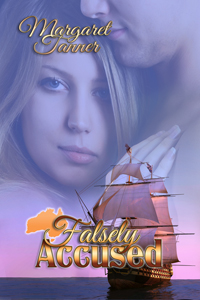It was 1957 when Mom and I traveled to Nevis. It was January, which is the best
tourist weather in the Caribbean, with lots of sun. We flew up from Barbados to
Antigua and then on to mountainous St. Kitts on the old British West Indian
Airways in a DC 3. We boomed along slowly, carefully skirting majestic
cumulus clouds. Flying was a less exact
process in those days, and deep in the innards of those big clouds rough
weather could be hiding.
I was pretty excited, because we were going to see the place
where my hero, Alexander Hamilton, had been born. Mom said there probably wouldn’t be much to
see but the island itself, however, she too was curious about this (then)
rarely visited speck in the West Indian sea. Honoring Hamilton, I knew, was a kind
of family tradition. My Grandfather Liddle always spoke highly of his great achievements
as a Founding Father. So, after a foray into the musty interior of a used book
store, my usually critical mother had been approving when I’d arrived at the
cash register with Gertrude Atherton’s 1902 “dramatic biography” of Hamilton
in hand.
Mrs. Atherton had studied her subject with care. She, being an
adventurous woman (and probably well-heeled), had traveled in the 1890’s to both
Nevis and St. Croix, another island where Hamilton spent part of his youth, to do research. All her skillful, ardent
Edwardian prose went straight to my head. By the time I finished her book, I was convinced that Alexander
Hamilton was the most romantic--as well as the smartest, hardest working man--among
that crew of geniuses who’d shaped our early republic.
Mom and I stayed overnight in St. Kitts. I remember that as one of the coldest I ever
spent in the West Indies. There were shutters, and although we closed them tightly,
the wind whistled through our room all night. Our plane was supposed to leave
in the afternoon for Nevis—there were two ways to get there—on a ferry or in a
small plane—but I was famously sea-sick. The plane would be small, completely
full with four passengers and the pilot.
We arrived at the airport
–which was just a tin-sided, palm-frond-roofed shelter—and then waited and
waited. The little plane (probably a modified Super Cub) was in parts in a shed
next to the runway, because “somethin’ was not right”. My mother and I both grew
anxious, as you might imagine. I sat on a wooden bench cradling Mrs. Atherton’s
book. I was by now well on the way to
memorizing it.
Finally, we took off, even though the sun was going down.
The adults, used to the vagaries of West Indies travel, made graveyard jokes,
but falling out of the sky into the ocean didn’t really seem possible to me,
not when I was on the verge of my Hamilton epiphany. Half an hour later, we arrived—landing on an
island which is little more than a mountain whose cloudy head juts from the sea.
The runway was a grass field. Men holding poles with flaming,
kerosene-soaked rags wrapped about their tops illuminated our landing
area. A couple of bounces later, we were
down. Then another wait, until a couple of taxis appeared to take us all into
Charlestown.
At the guest house, lit by kerosene lanterns, the gray-haired
proprietress, looking as if she’d stepped out of the 1920’s in her dowager’s
ankle-length dress, took one look at me and said she didn’t allow
children—“especially not American children” in her house. Looking around the
room, with lots of antimacassar-backed chairs and delicate-legged side tables,
every surface of which was covered with china figurines, I had a notion of what
she was worried about. Mom put on her
most glacial demeanor and said that I was a perfectly well-behaved only child
who spent all her time reading and who would certainly never enter the good
parlor unless invited to do so. “And
besides,” she added, “I have brought her all this way from New York State to
see where her hero, Alexander Hamilton, was born. Show her your book, Judy.”
I held out the beloved book for the old woman’s inspection.
“Ah,” she said, examining the cover. “Why, it’s Mrs.
Atherton! Do you really like it?”
“Very much,” I said. “I can’t stop reading it. Hamilton goes
with me everywhere.”
For the first time, the lady smiled. She extended her hand and
said, “Come with me, my dear, and I’ll show you my very own copy of that book.”
And sure enough she had one, the only other copy I’ve ever
seen “in person.” Who could have predicted that this would be the thing that would convince
her to let us stay?. Our hostess then explained the kerosene lamps.
“It’s after six o’clock now. From 6 a.m. to 6 p.m. we have
electricity, after that we use these. It makes for early nights.”
On the very next day, we contemplated a heap of stones by the
harbor which were said to be the remains of the Hamilton house. We did a lot of one-of-a-kind things there. We bathed in the hot
springs in our swim suits, everything very informal. You just paid the man
who hung around there, and he walked along with you to the hollows where the
water steamed, warning you first about which pools that would scald you. These gravel-bottomed
pools were shaded by a grove of towering palm trees. The tall ferns and delicate
flowers clustered about the “baths” were the lushest and most beautiful I’d ever seen.
Another day, we traveled up the mountain to see the ruins of
sugar mills. We particularly admired one that had been turned into a hotel where we met the
owners and enjoyed lunch. There were always clouds gathering around the top of that mountain every
afternoon. We were up so high that day that these gray clouds enveloped us, eventually bathing everything
with a surprisingly cool tropical rain.
On other, more ordinary days, we swam from a beach of brown sugar sand, but
it was often cloudy, more so than the other islands we’d
visited. We weren't keen to swim too far out into that mysterious gray-blue water, either, as there was often not another soul around for
as far as the eye could see.
It's been a good many years since that visit, but Alexander and his beloved Betsy are still with me, as well as so many treasured memories of that lovely, mysterious, cloudy-headed island. It was hard to let go of a story I've been writing off and on and for ever so long, but here, at last, Books We Love has published it.
~~ Juliet Waldron
A Master Passion, a novel of Alexander Hamilton and Elizabeth Schuyler
Available at:
~~~































